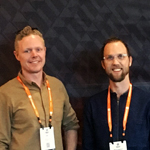Construction management firms across the globe understand that effective preconstruction is critical to the successful outcome of a project. Preconstruction efforts can help prevent miscommunication, project delays, and unexpected issues on the construction site. Through establishing schedules and roles, various teams understand expectations of their group’s contribution to ensure the outcome of a project is successful. With different approaches to how preconstruction can be optimized, Gilbane continues to strive to improve our processes in innovative ways every day.
Multiple departments at Gilbane fall under the preconstruction umbrella, including Estimating, Scheduling, Interdisciplinary Document Control (IDC), our Virtual Design and Construction (VDC), and Procurement. These distinct departments are all focused on taking a project through the critical preconstruction phase, but all approach the subject from different angles. Through enhanced interdepartmental collaboration and a dedication to continuous improvement, Gilbane has increased effectiveness and minimized confusion in the transition from preconstruction to construction. This is critical for our VDC department, which straddles preconstruction and operational construction responsibilities. The overlap gives the VDC team unique insight into developing innovative processes.
IDC & VDC
The IDC and VDC teams at Gilbane produce preconstruction issue reports based on design milestones. The IDC team combed through the 2D contract drawings to identify missing information, uncoordinated designs, and life safety issues. The VDC team focuses on similar issues but utilizes the design team’s 3D models to identify issues associated more with spatial constructability. Both groups provide unique value, using different tools to resolve the issues. VDC’s reports are called Design Model Coordination/Constructability (DMC) Reports.
Identifying the Need to Enhance Collaboration
The reports that each team generates independently often identify the same and/or overlapping issues. This can potentially create information overload for the owners and design teams responsible for resolving the issues. Additionally, the handoff from the preconstruction teams to the project teams responsible for the execution of the project can be inconsistent, precluding a definitive way to confirm that unresolved scope issues are accounted for. If left unresolved, the teams and, many times, VDC need to readdress these issues again in our model-based Trade Contractor submittal coordination, duplicating the work in a costly manner.
The Consolidated Support Operations Process
By understanding the hurdles and parameters of these two departments and other support operation’s respective responsibilities, a simple yet more integrated approach to tackling issue resolution for better operational handoff was created:
- A joint IDC/VDC Report is created in Procore for both teams. Clear communication between the teams enhances this deliverable to resolve as many issues as possible with the design team early.
- A designated support operations gatekeeper, like a preconstruction engineer, reviews the report. The gatekeepers determine a strategy for incorporating issues and sort through them accordingly.
- The project operations teams are typically allocated elsewhere at this juncture, so getting the critical team members ‘in the know’ about the project can be challenging. The Preconstruction Engineer sorts the list and develops an initial procurement strategy to resolve this. This activity occurs through a review meeting with relevant personnel from both preconstruction and operations.
- Any issues that are unresolved after the design phase then fall into two procurement buckets:
- Scope line items to be incorporated into trade contractor package or
- Construction allowances
- At an appropriate time before guaranteed maximum price (GMP) finalization, a meeting is held to review the initial line-item report and any additional issues raised by Trade Contractors. This ensures that all issues have been addressed through either incorporation into scopes, provision of allowance/line-item cost, or exclusion.
- Upon confirmation that all issues have been accounted for, all reports, cost information, exclusions, and contracts will be delivered to the PM/PX for incorporation into the GMP.
This effort has had the double impact of making issue resolution significantly easier for design teams while also providing Gilbane and the owners with the confidence that all identified issues have been addressed.
Redefining this collaborative process has improved efficiencies and alignment with preconstruction and operations. Our Gilbane teams constantly strive to provide proactive improvements that ultimately give our clients a positive experience with increased effectiveness on their projects.

